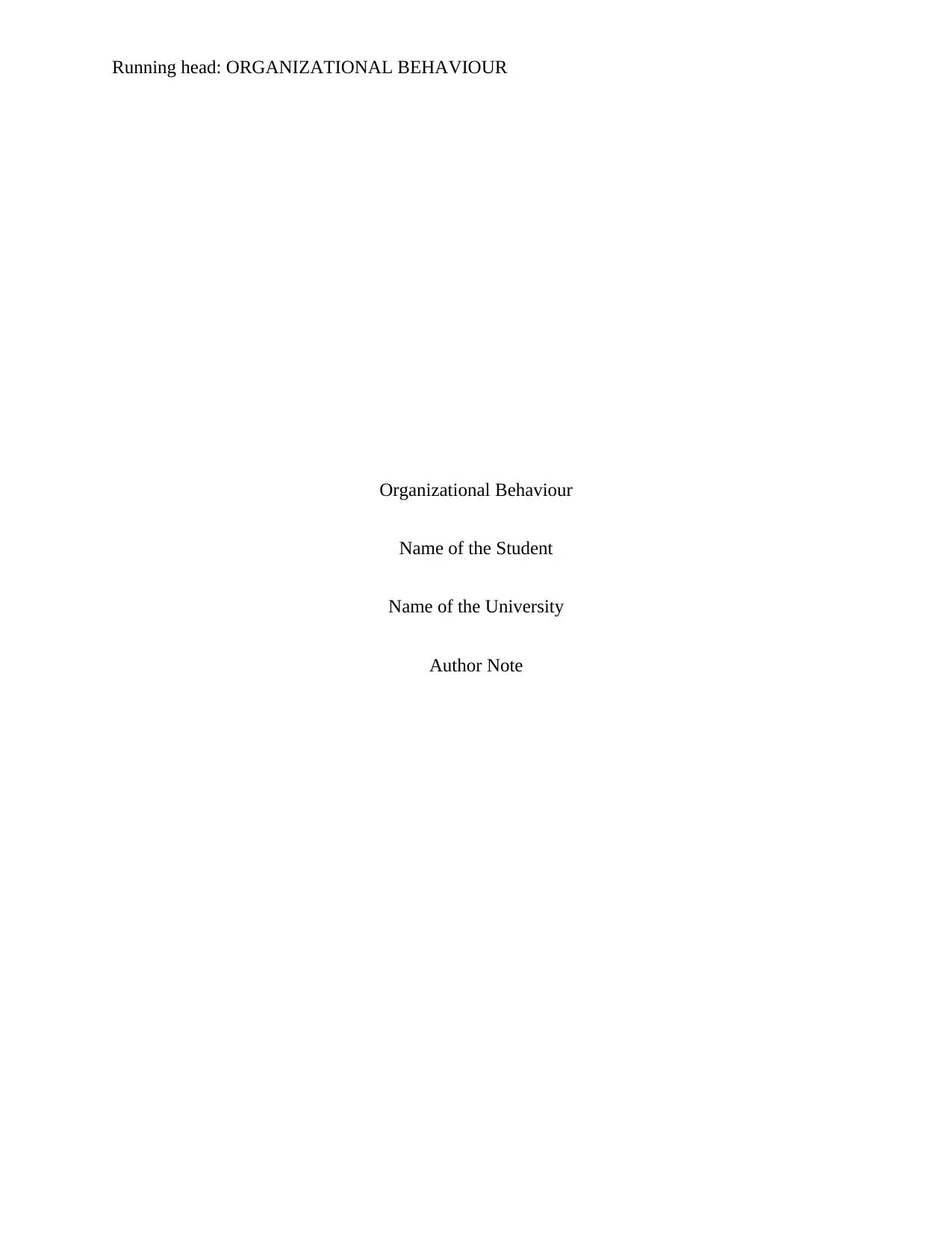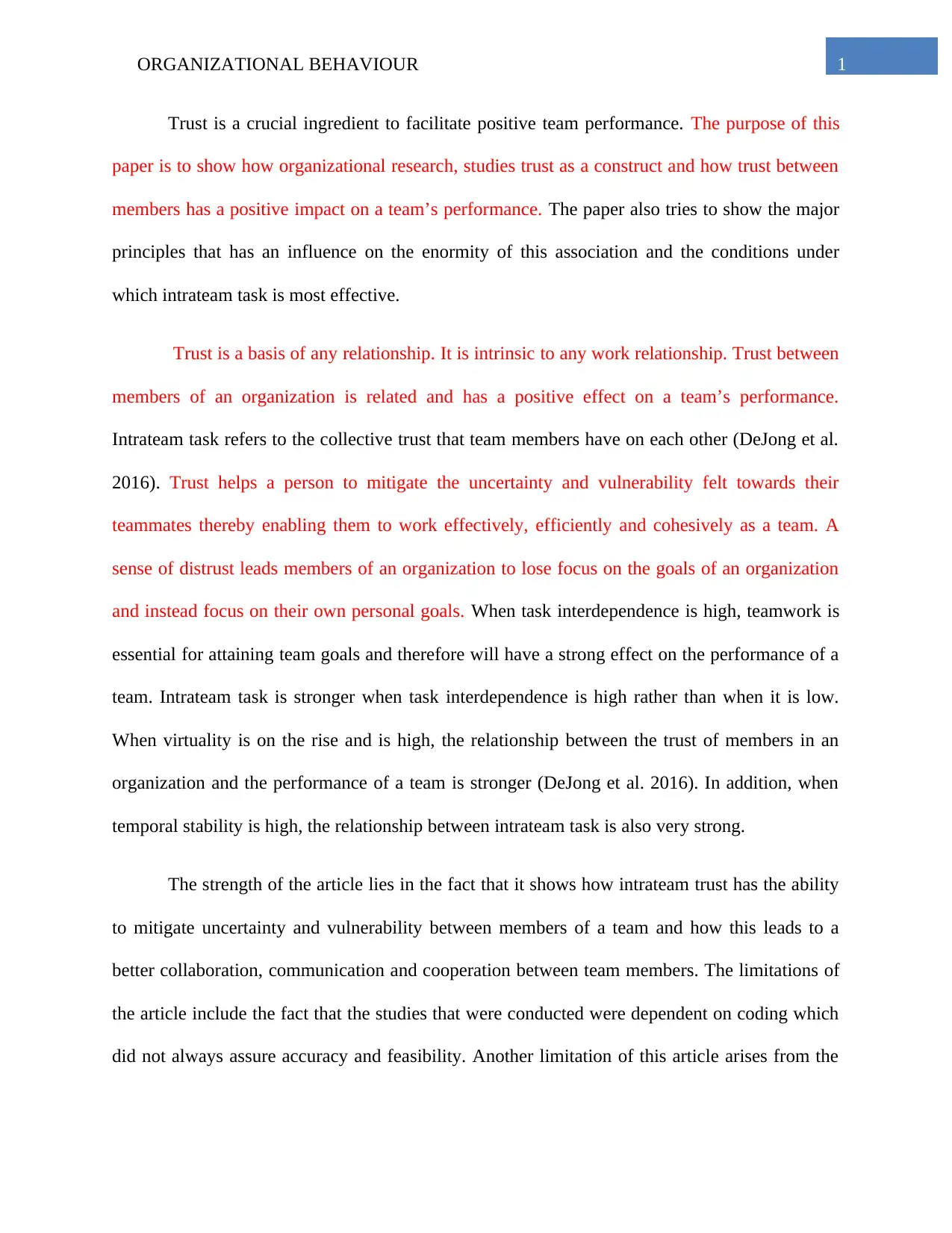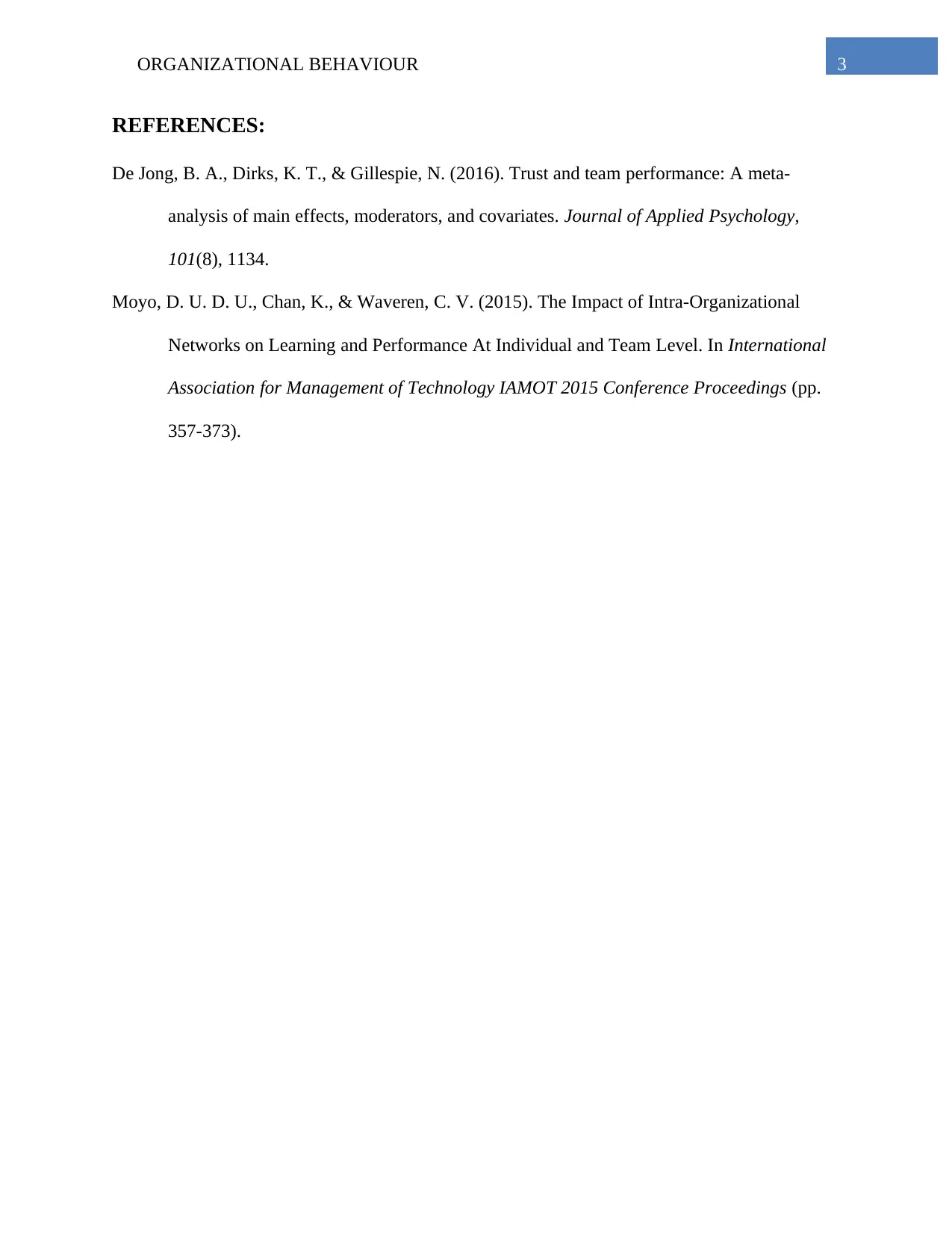Organizational Behaviour Report: Impact of Trust on Team Performance
VerifiedAdded on 2023/06/04
|4
|525
|79
Report
AI Summary
This report delves into the critical role of trust in facilitating positive team performance within organizational settings. It examines how organizational research studies trust as a key construct and how the trust between team members positively impacts their overall performance. The report explores the core principles that influence the strength of this relationship, as well as the conditions under which intrateam task effectiveness is maximized, such as high task interdependence, virtuality, and temporal stability. The analysis is based on a meta-analysis of 112 independent studies, which confirms the positive relationship between intrateam trust and team performance. While highlighting the benefits of trust in mitigating uncertainty and fostering collaboration, the report also acknowledges limitations in the research methodology, such as the reliance on coding and the prevalence of cross-sectional, non-experimental studies. The report references key sources like De Jong et al. (2016) to support its findings.
1 out of 4











![[object Object]](/_next/static/media/star-bottom.7253800d.svg)